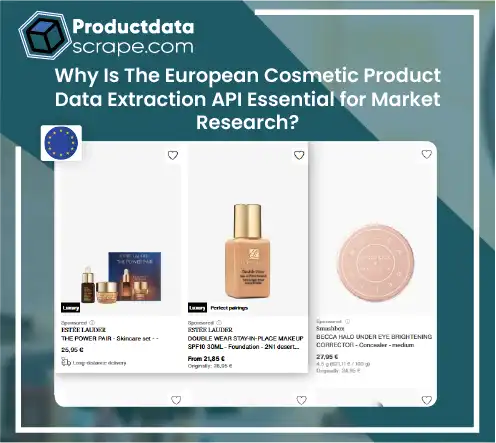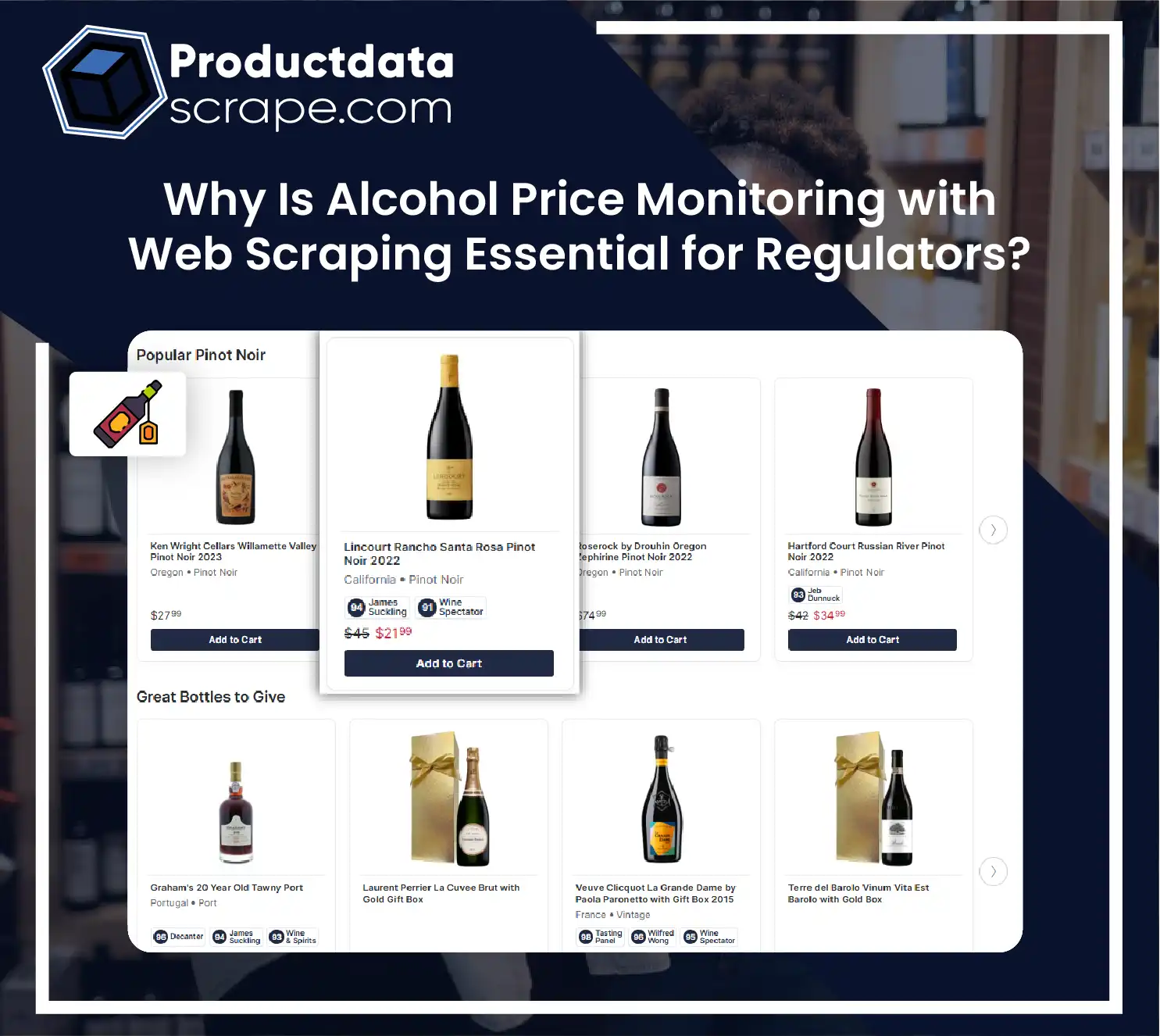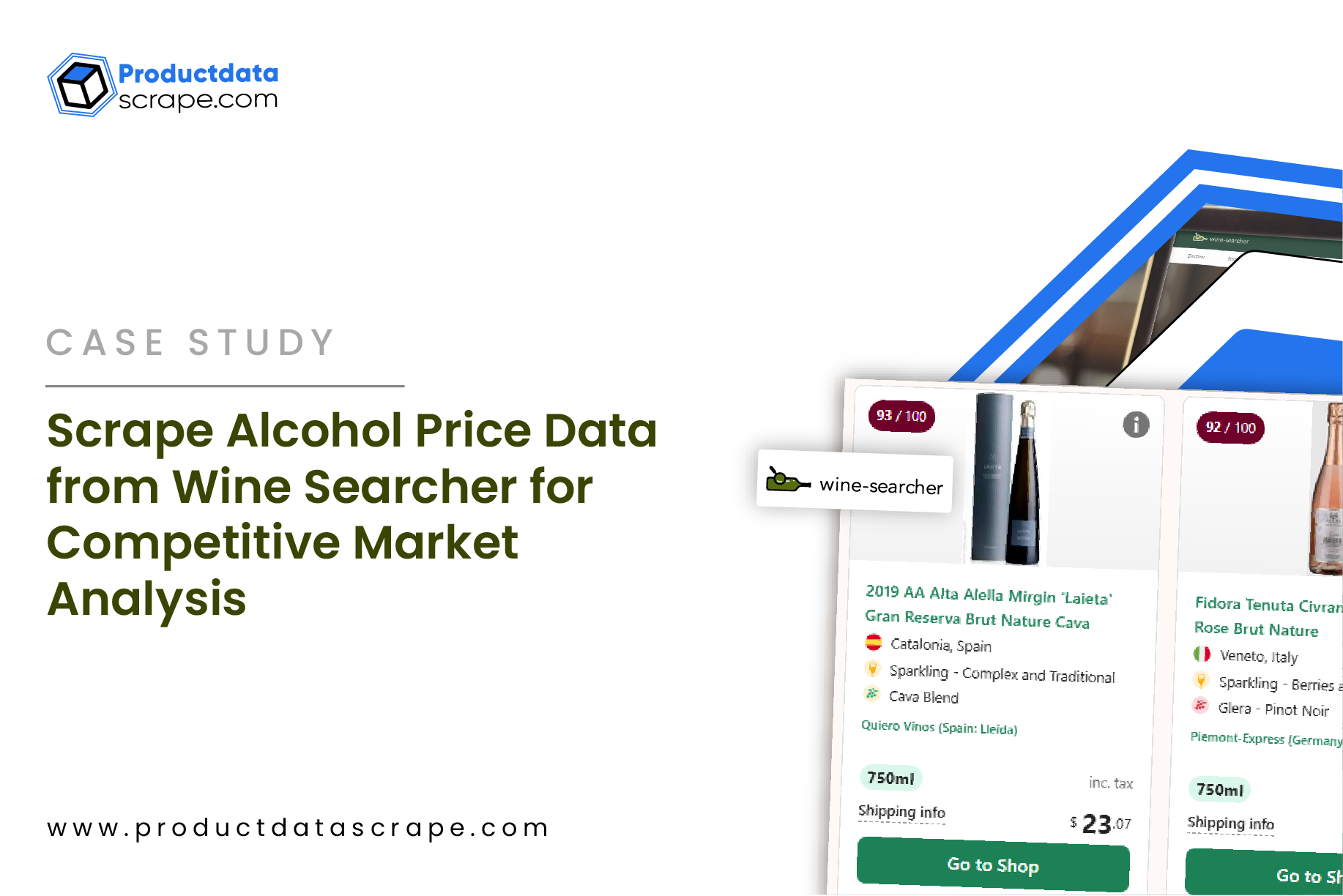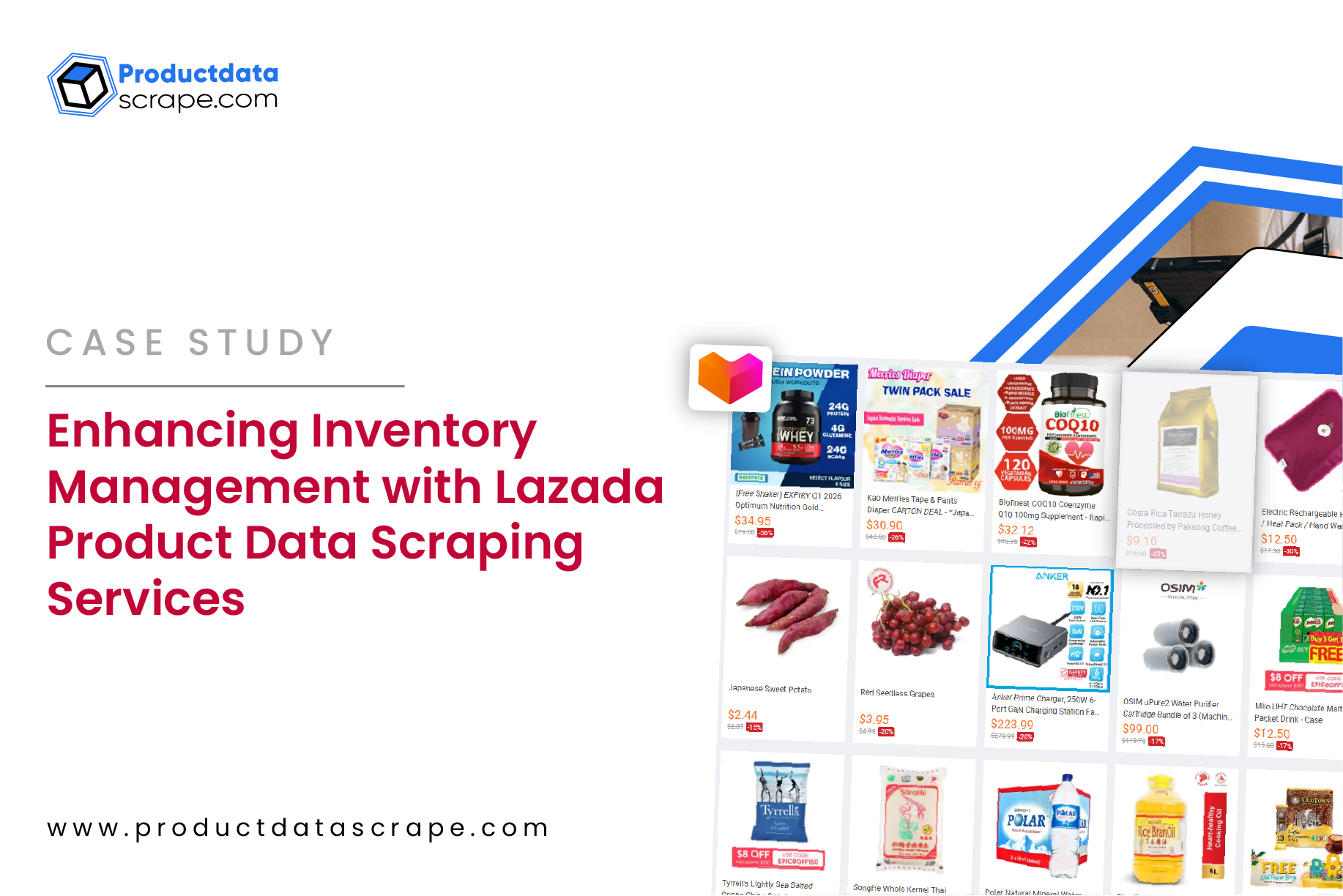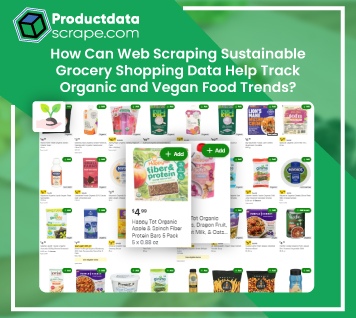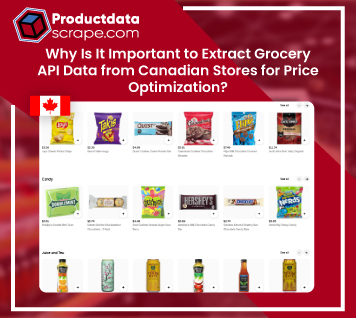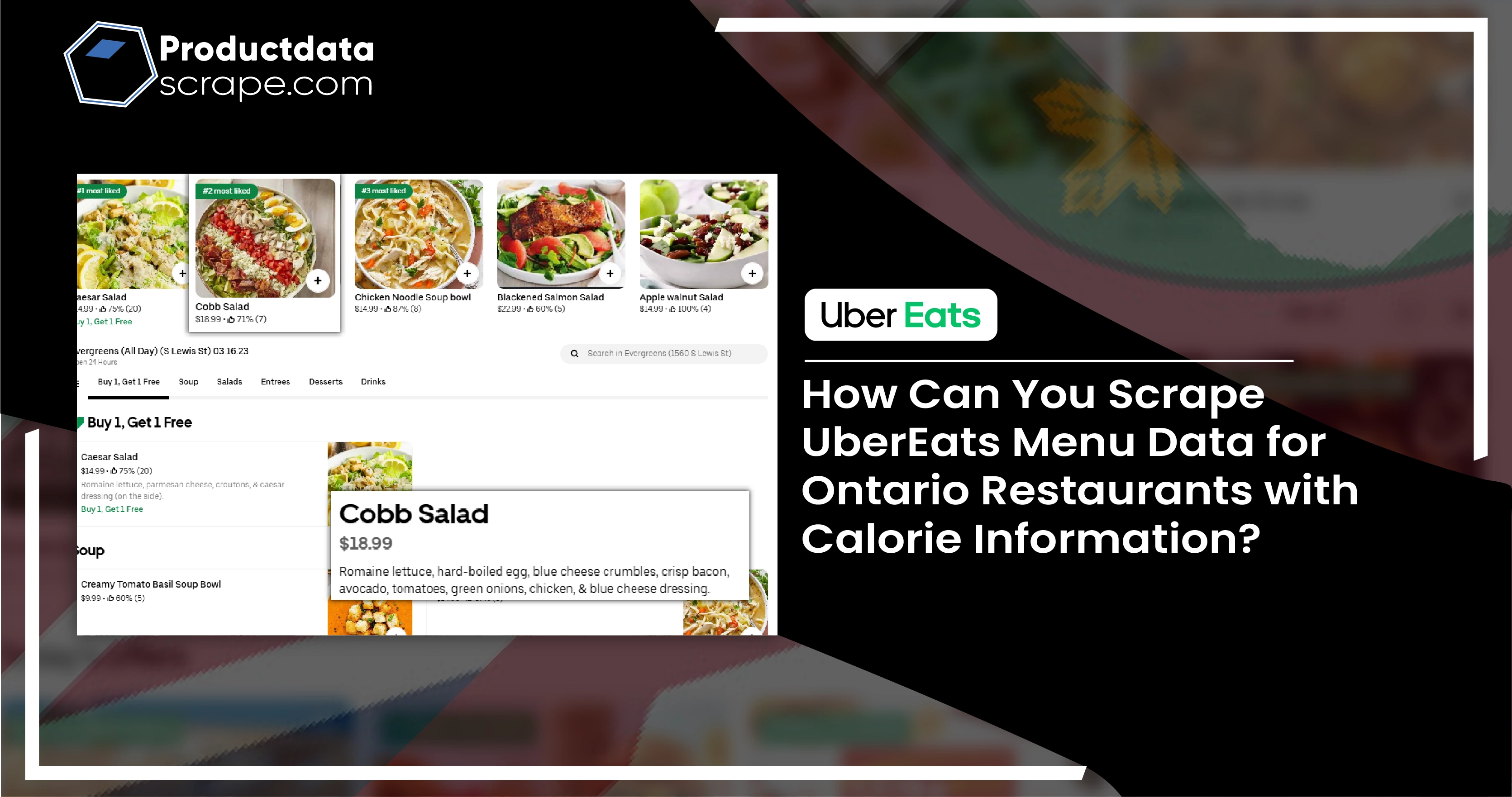
The growing demand for food delivery services has transformed the restaurant industry in recent years, offering a convenient solution to busy consumers. One of the leading platforms in the online food delivery space is UberEats, which connects restaurants with customers through its mobile app. As the popularity of food delivery services like Uber Eats continues to rise, understanding menu offerings, nutritional information, and consumer preferences becomes crucial for restaurant owners and data analysts.
Among the various aspects of restaurant data, the nutritional value of menu items, mainly calorie information, has emerged as an essential factor. Consumers today are more health-conscious than ever, seeking to make informed food choices based on calories, fat content, and other nutritional facts. Scrape Uber Eats menu data for Ontario restaurants with calorie information to leverage this valuable resource to improve operations, enhance customer experiences, and drive sales.
This article explores scraping the Uber Eats Restaurant Menu with Nutritional Information in Michigan. It highlights the benefits of scraping, the challenges faced by analysts, and the ethical considerations that must be considered while extracting and utilizing this data. Additionally, the article touches on the significance of UberEats Restaurant Data Scraping and how it can offer valuable insights for restaurant optimization.
The Significance of Calorie Information in Food Choices
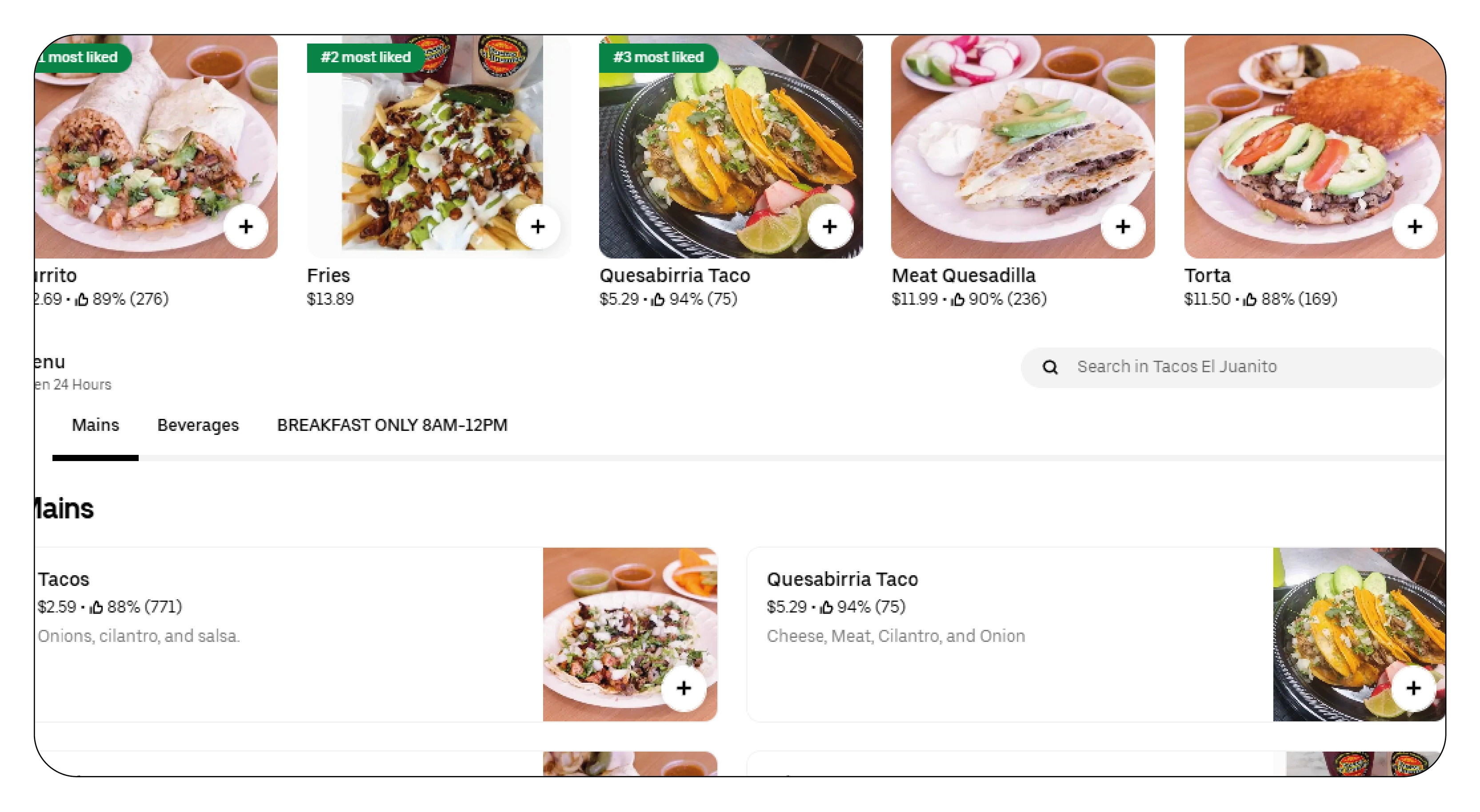
As the world becomes more health-conscious, there is a growing trend toward tracking nutrition and fitness. In response, many consumers are now demanding transparency when it comes to the food they consume. They want to know how many calories a dish contains and other nutritional factors such as fats, sugars, proteins, and sodium content. This has driven restaurant chains to include nutritional information on their menus, particularly in Ontario.
Uber Eats, one of the largest food delivery platforms, offers a direct channel for consumers to access menus, make food orders, and explore calorie content. For instance, consumers looking to control their calorie intake can easily browse through Uber Eats' restaurant menus, filtering their options based on calories, allowing them to make more informed decisions.
From a business perspective, restaurants that provide this transparency through calorie information can position themselves as healthier or more diet-conscious brands. Additionally, they gain the trust of consumers who are mindful of what they eat. Providing calorie information for restaurants in Ontario is especially important due to increasing government regulations that require more apparent nutritional content labeling on menus.
Similarly, Uber Eats Restaurant and Menu Data Extraction with Calories for Michigan can help businesses outside Ontario comply with local nutrition labeling regulations. The data extracted through Web Scraping Uber Eats Food Delivery Data can offer valuable insights for restaurants and consumers across different regions, enabling businesses to tailor their offerings according to specific dietary trends.
Scraping UberEats Menu Data: Why It Matters?
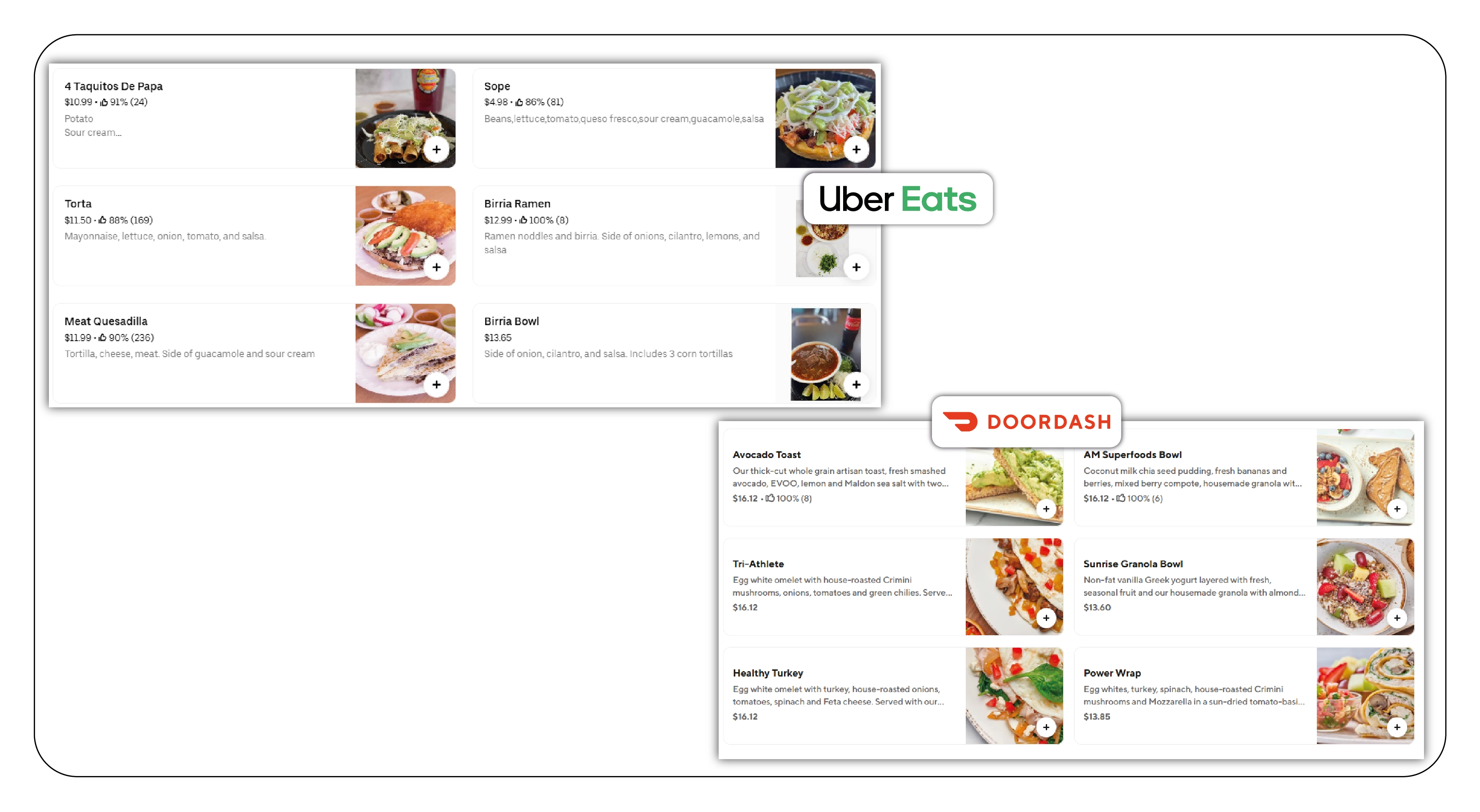
The concept of web scraping refers to the process of extracting information from websites by using automated scripts. In the case of Uber Eats, scraping refers to the process of extracting menu data from individual restaurant listings, including food items, prices, ingredients, and nutritional information like calories.
• Data-Driven Decision-Making: By scraping UberEats menu data, restaurant owners and food businesses can gain deep insights into consumer preferences, which menu items are most popular, and the price points most attractive to their target market. This data-driven approach can significantly improve marketing strategies, product offerings, and overall customer satisfaction. The ability to extract UberEats restaurant menu data with detailed calorie and nutritional information enables businesses to refine their offerings and better meet customer needs.
• Competitive Analysis: The restaurant industry is highly competitive, and businesses must be aware of their competition to stay relevant. Scraping Uber Eats menu data allows restaurants to monitor competitors' menu offerings, nutritional information, and pricing strategies . For instance, a restaurant offering healthier alternatives can leverage calorie information from competitors' menus to differentiate itself. Using UberEats Restaurant Data Extraction with Calories in Ontario helps businesses stay informed on regional trends, giving them a competitive edge.
• Menu Optimization: Many restaurants struggle to determine which menu items to feature prominently or discontinue. Scraping calorie information alongside other factors like sales data and customer ratings can help businesses identify which dishes are well-received and align with health-conscious trends. By utilizing UberEats Menu Scraping Service with Calorie Data in Michigan, restaurants can fine-tune their menus based on performance data, leading to a more effective and customer-friendly selection.
• Enhancing Consumer Experience: Health-conscious customers often seek calorie information before ordering. By scraping and analyzing this data, restaurants can improve the customer experience by ensuring the most popular and nutritionally balanced dishes are featured prominently on their menus. UberEats Food Data Scraping allows businesses to extract valuable insights into customer preferences, helping them cater to the growing demand for transparency in food options.
• Compliance with Local Regulations: Ontario has increasingly stricter regulations for restaurants to provide nutritional information, including calorie counts, on their menus. Scraping Uber Eats menu data with calorie details allows restaurant owners to stay ahead of regulatory requirements and provide necessary transparency to their customers. Using an Uber Eats Food Dataset that includes detailed calorie information can help businesses in Ontario meet these legal obligations efficiently, ensuring compliance with local standards.
Challenges in Scraping UberEats Menu Data
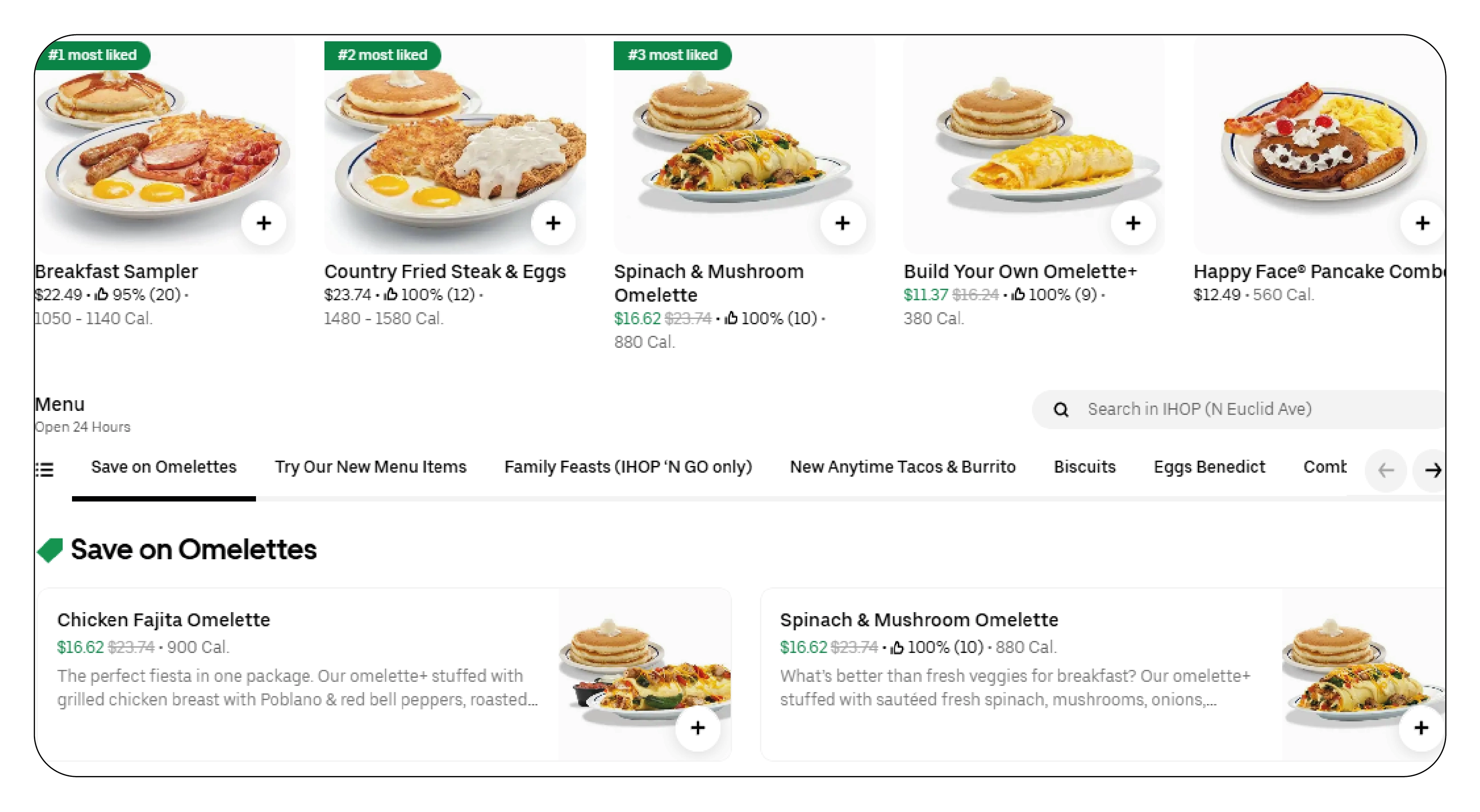
Despite the numerous benefits, scraping Uber Eats menu data for calorie information is challenging. Some of the significant hurdles faced by data analysts and businesses in this process include:
1. Website Structure Changes: Websites, including UberEats, regularly undergo updates that can affect their layout or structure. This can break existing scraping scripts or lead to inaccurate data extraction. Data analysts must continuously update their scraping tools to account for these changes and ensure the collected data remains accurate. When working to extract Uber Eats restaurant menu data, analysts must be prepared to adjust their methods in response to any structural changes on the platform.
2. Rate Limits and Blocking: To prevent abuse and protect their data, many websites, including Uber Eats, implement rate limits or blocking mechanisms to prevent scraping tools from extracting large amounts of data. Analysts must find ways to bypass these barriers while maintaining the website's terms of service. When trying to extract Uber Eats food delivery data, it's essential to be mindful of these rate limits to avoid being blocked or penalized.
3. Incomplete or Inconsistent Data: While many restaurants provide detailed calorie counts for each menu item, not all establishments on UberEats may offer this information. Only complete or consistent data can pose significant problems when scraping for nutrition details. Analysts may need to employ data-cleaning techniques to address these gaps. When using Web Scraping Uber Eats Data , it's essential to anticipate gaps in calorie information and ensure the extracted data is as comprehensive as possible.
4. Legal and Ethical Concerns: Scraping data can raise legal and ethical concerns. Uber Eats, and the restaurants listed on its platform may have specific service terms prohibiting scraping. Violating these terms could result in legal action, penalties, or banning from the platform. Furthermore, data privacy concerns must be considered when dealing with consumer data. When undertaking Grocery & Gourmet Food Data Scraping , it's crucial to understand the legal framework governing the collection and use of this data to avoid potential risks.
5. Data Accuracy: Restaurants' menu calorie information may only sometimes be accurate or up to date. Data analysts must cross-check the scraped data with official sources, such as restaurant websites or nutritional databases, to ensure accurate information. To maintain credibility and reliability, they must scrape Uber Eats Food Delivery Data and verify the data from multiple sources.
Ethical Considerations in Scraping Data
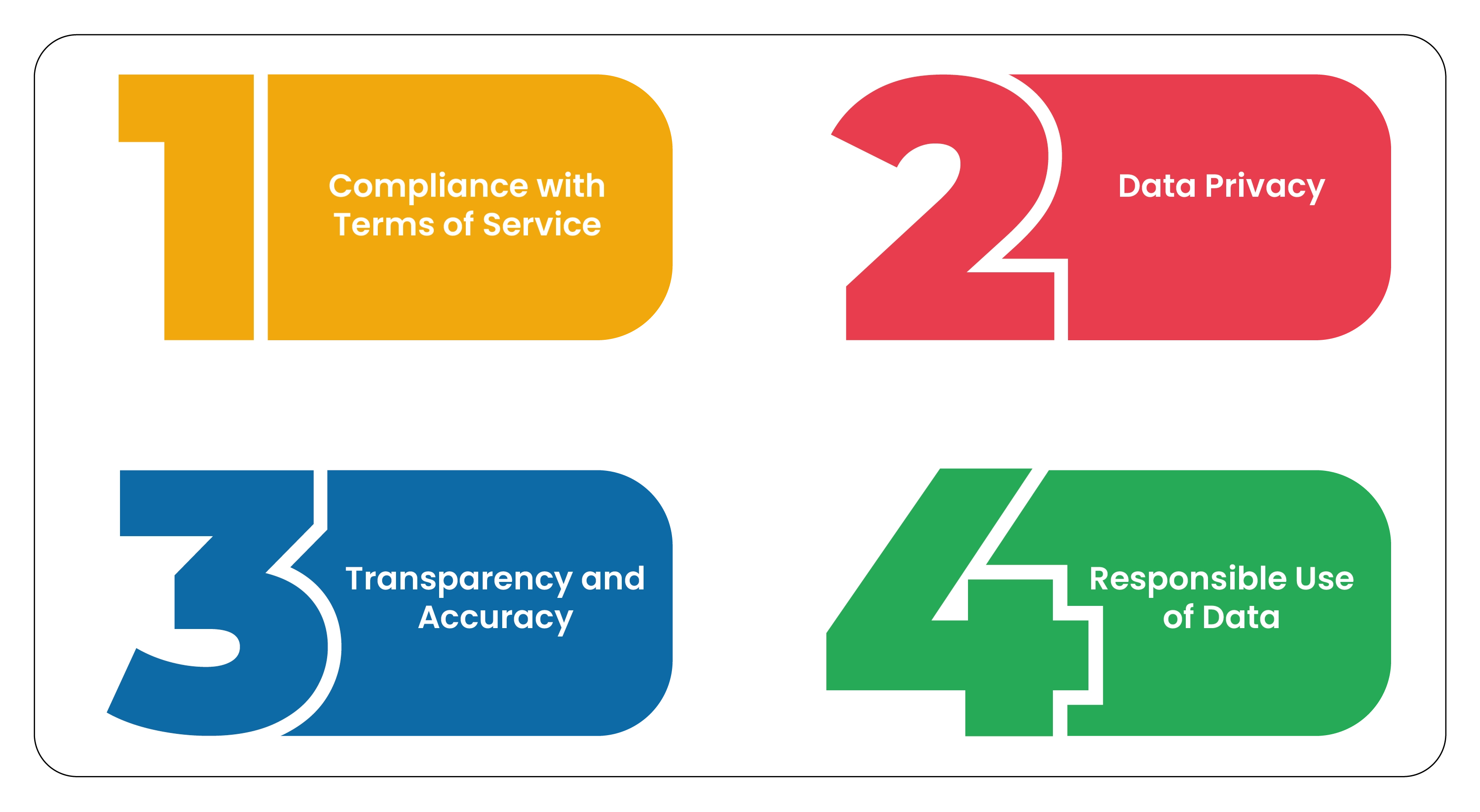
When scraping Uber Eats menu data, particularly for calorie information, it's essential to consider ethical principles and ensure compliance with legal standards. Here are some critical ethical guidelines to follow:
1. Compliance with Terms of Service: Reviewing and understanding the platform's terms of service before scraping Uber Eats is essential. Many platforms explicitly prohibit scraping, and violating these terms can result in legal consequences or loss of access to the platform's data. In some cases, platforms may offer an API that allows for the legal and ethical extraction of data, and this should be considered before using scraping tools.
2. Data Privacy: While scraping menu data is usually not considered a privacy violation, care should be taken to ensure that no personally identifiable information (PII) or sensitive customer data is collected. Scraping should focus solely on publicly available data, such as menu items and nutritional information.
3. Responsible Use of Data: The data extracted should be used to benefit the consumer and respect individuals' privacy. For instance, businesses should ensure they do not manipulate nutritional information to mislead customers about the healthfulness of their dishes.
4. Transparency and Accuracy: Restaurants and businesses that use scraped data should be transparent about their data sources and ensure the accuracy of the data they present, especially when it involves calorie information. Inaccurate nutritional data can mislead consumers and result in a loss of trust.
The Future of Scraping UberEats Menu Data for Ontario Restaurants
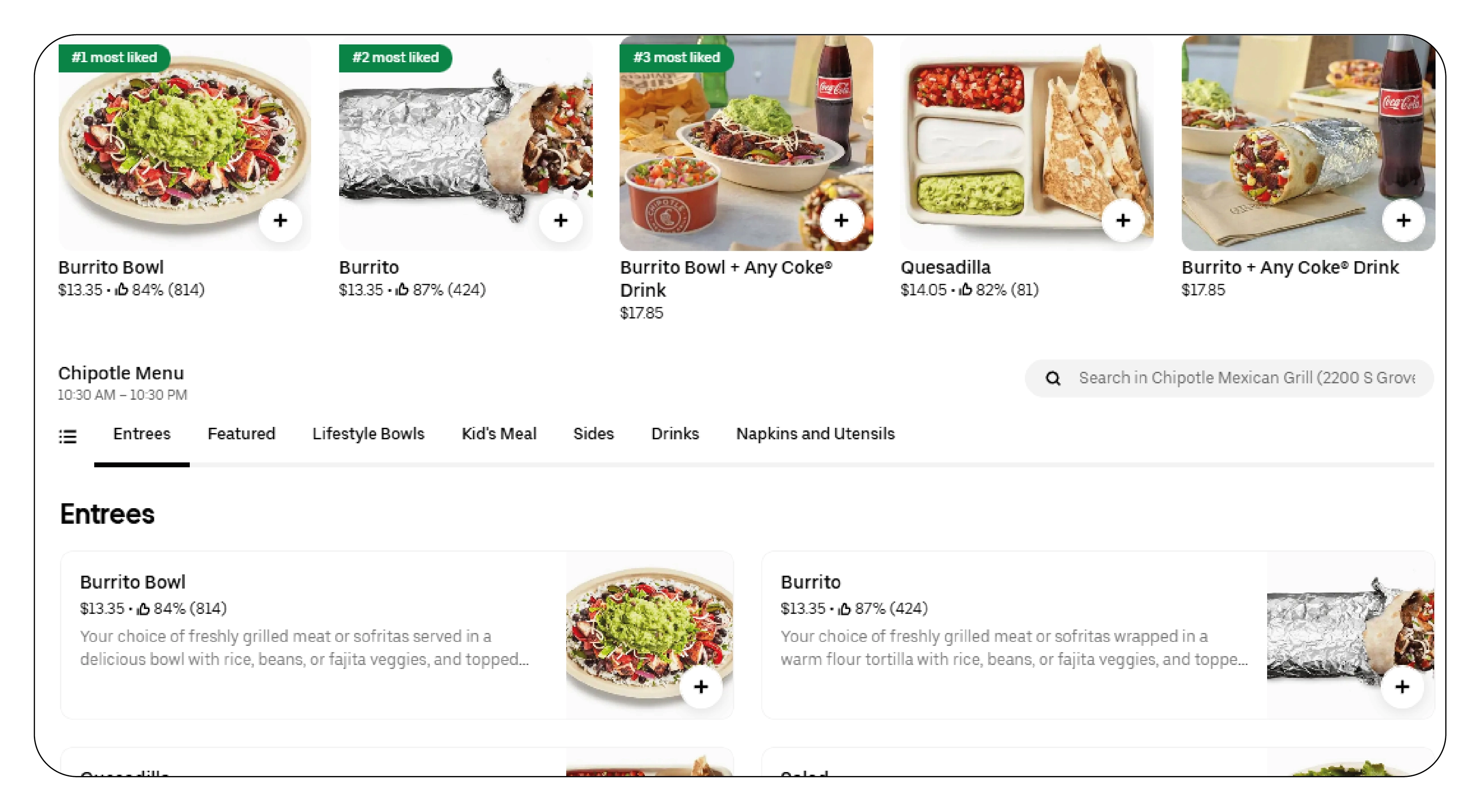
Data analytics will only become more critical as the food delivery industry evolves. Scraping Uber Eats menu data, including calorie counts, will help restaurants stay ahead of the competition by making informed decisions about menu offerings, pricing, and health-conscious options.
In Ontario, where regulatory requirements for nutritional information are becoming more stringent, restaurants can benefit from scraping and analyzing menu data to ensure they comply with local laws. Additionally, businesses can use this data to enhance customer experiences, improve menu planning, and refine marketing strategies.
In the future, as technology advances, more sophisticated scraping tools, artificial intelligence (AI), and machine learning (ML) algorithms will enable even more precise and automated data extraction. This will allow businesses to gain deeper insights into consumer behavior, health trends, and market demands, ultimately leading to more personalized and healthier food options for customers.
Conclusion
Scraping Uber Eats menu data, including calorie information, presents opportunities and challenges for Ontario restaurants. By leveraging this data, businesses can enhance operations, stay compliant with regulations, and improve customer satisfaction. However, it is crucial to address the challenges of web scraping, including rate limits, data accuracy, and legal concerns. When done ethically and responsibly, scraping Uber Eats menu data can provide valuable insights that contribute to the success and sustainability of Ontario's restaurant industry.
At Product Data Scrape, we strongly emphasize ethical practices across all our services, including
Competitor Price Monitoring and Mobile App Data Scraping. Our commitment to transparency and
integrity is at the heart of everything we do. With a global presence and a focus on personalized
solutions, we aim to exceed client expectations and drive success in data analytics. Our dedication to
ethical principles ensures that our operations are both responsible and effective.







